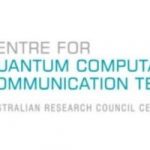Hands-On Look at Microsoft Quantum Development Kit and IBM Q and Qiskit SDKs

(InfoWorld) Written by Martin Heller, an obviously experienced editor and computer programmer, this article opens with a set of quantum computing definitions excellent to share with colleagues not yet versed on this technology.
Heller also provides an excellent review of how to use Microsoft Quantum Development Kit and IBM Q Experience.
The Microsoft Quantum Development Kit (QDK) consists of the Q# programming language, a set of libraries that abstract complex functionality in Q#, APIs for Python and .NET languages (C#, F#, and VB.NET) for running quantum programs written in Q#, and tools to facilitate your development. You can install Q# for C#, Q# for Python, and/or Q# for Jupyter Notebooks on Windows, Linux, and macOS.
When you run Q# on your own computer, you’ll have to use a quantum simulator. If you run it on Azure, you’ll eventually be able to connect to an actual quantum computer built from cryogenically cooled nanowires (see photograph below). Microsoft says that quantum access previews will be rolling out sometime in 2020.
The IBM Q Experience (see screenshot below) offers two ways to create quantum circuits: Circuit Composer, which is a graphical drag-and-drop environment, and Qiskit Notebooks, which use Python and Jupyter Notebooks to create the circuits in code. Both methods wind up the same, although you can also run Qiskit notebooks on your own machine if you install the Qiskit SDK on Windows, Ubuntu, or macOS.



















